EcoFlow Delta 2 Max Review
A high-capacity power station that will run almost everything




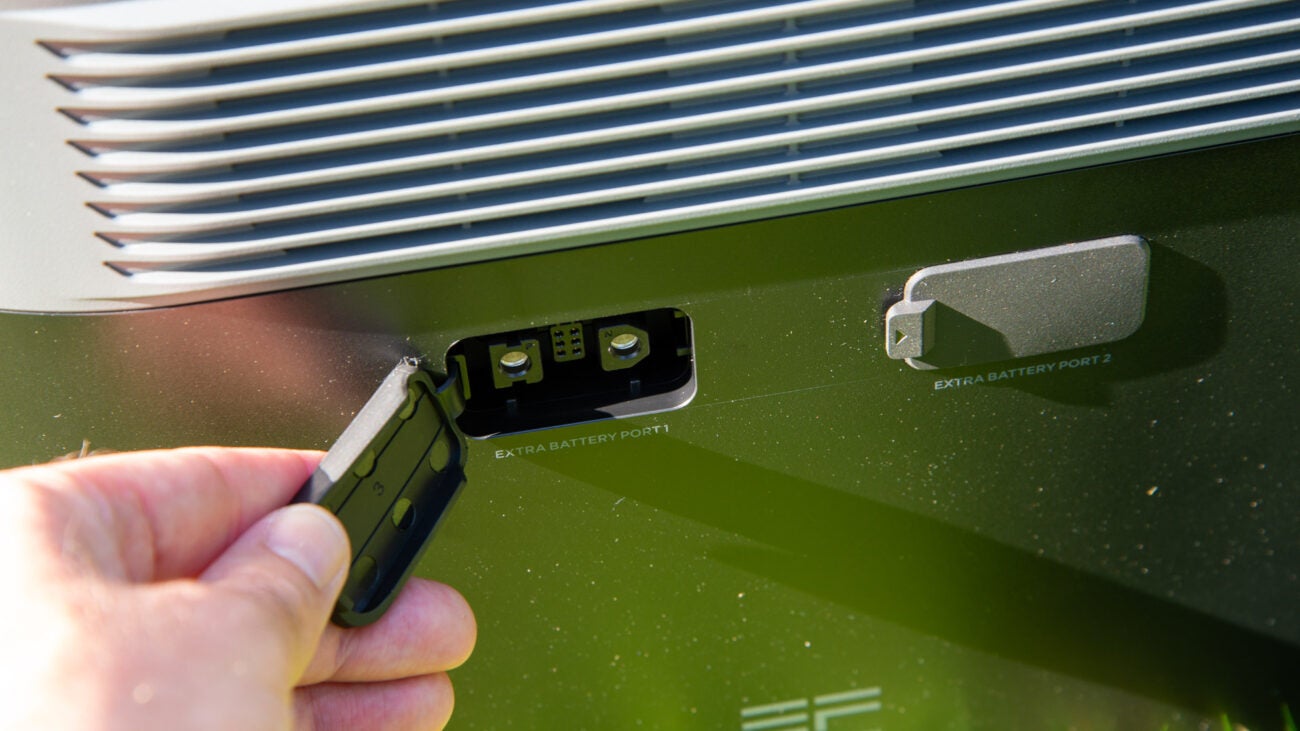

Verdict
With its high capacity (expandable to over 6kWh) and a maximum power output of 3100W, the EcoFlow Delta 2 Max can power almost every UK appliance. With fast charging, the ability to combine solar and AC, and smart energy control that lets you balance the two sources, this power station is fast and efficient to charge. It’s a little fiddly to carry around, but its excellent range of outputs and high efficiency make it a great choice for those that need a lot of power on the go.
Pros
- Up to 3100Wh power output
- Expandable
- Very efficient
Cons
- Slightly tricky to carry
Key Features
- CapacityThe main unit has a 2048Wh battery, and up to two additional 2048Wh batteries can be added.
- Power outputThe four UK power outlets support a maximum power output of 2400W in standard mode and 3100W when X-Boost is turned on, meaning that pretty much all appliances can be powered by this device.
Introduction
With a 2048Wh battery, four UK power outlets, a maximum power output of 3100W, and a hefty 23kg weight, the EcoFlow Delta 2 Max is at the limit of portability.
Built for those who need the maximum amount of power on the go, this is a well-featured and long-lasting battery system.
Design and features
- Four AC outlets
- 2400W power output (3100W with X-Boost)
- Smart app control
While the EcoFlow Delta 2 Max isn’t much bigger than the EcoFlow Delta 2, it’s considerably heavier at 23kg vs 12kg. That’s because the Max has a much bigger 2048Wh battery inside, which means that it can store between a quarter and a fifth of the average UK home’s energy usage. That said, the EcoFlow Delta 2 Max doubles the storage capacity, but doesn’t double the weight, which is impressive.
As with other EcoFlow batteries that I’ve reviewed, the Delta 2 Max has carry handles on either side of its body, so you can carry it with two hands. I slightly prefer the lift-up handle that Jackery provides on its power stations, such as the Explorer Explorer 1000 Plus.
The EcoFlow Delta 2 Max is well-provisioned. On the side with the LCD and main power button, there are the USB outputs: two 100W USB-C ports are great for modern laptops, plus there are two standard USB ports (12W per port) and two fast-charge ports (18W max).
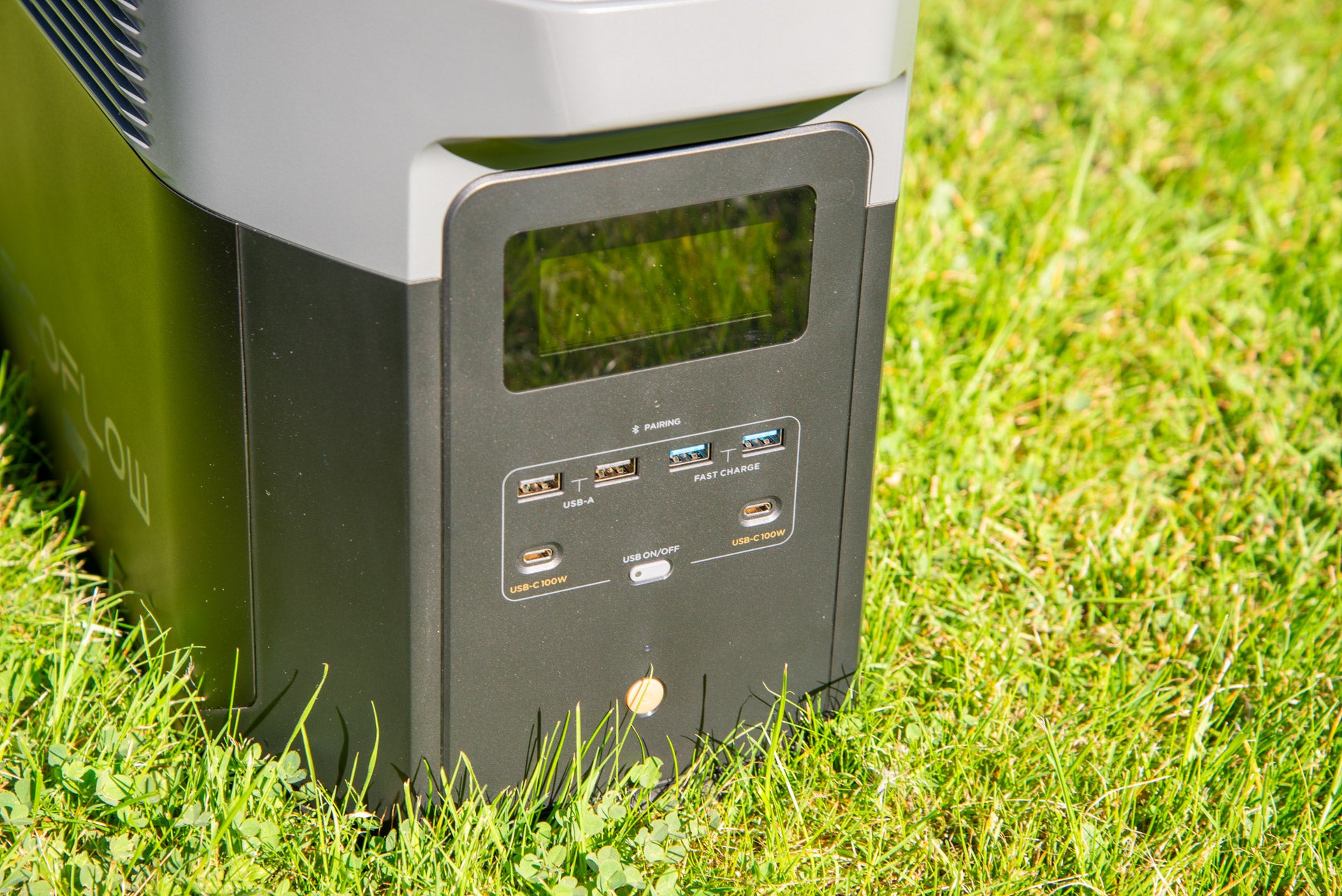
Spin the device around and on the opposite side are the power inputs, the four UK power outlets, and the DC outlets. UK power sockets can be annoying due to their size, but EcoFlow has aligned these well, so you should be able to use all four of them without a plugged-in adaptor causing an obstruction.
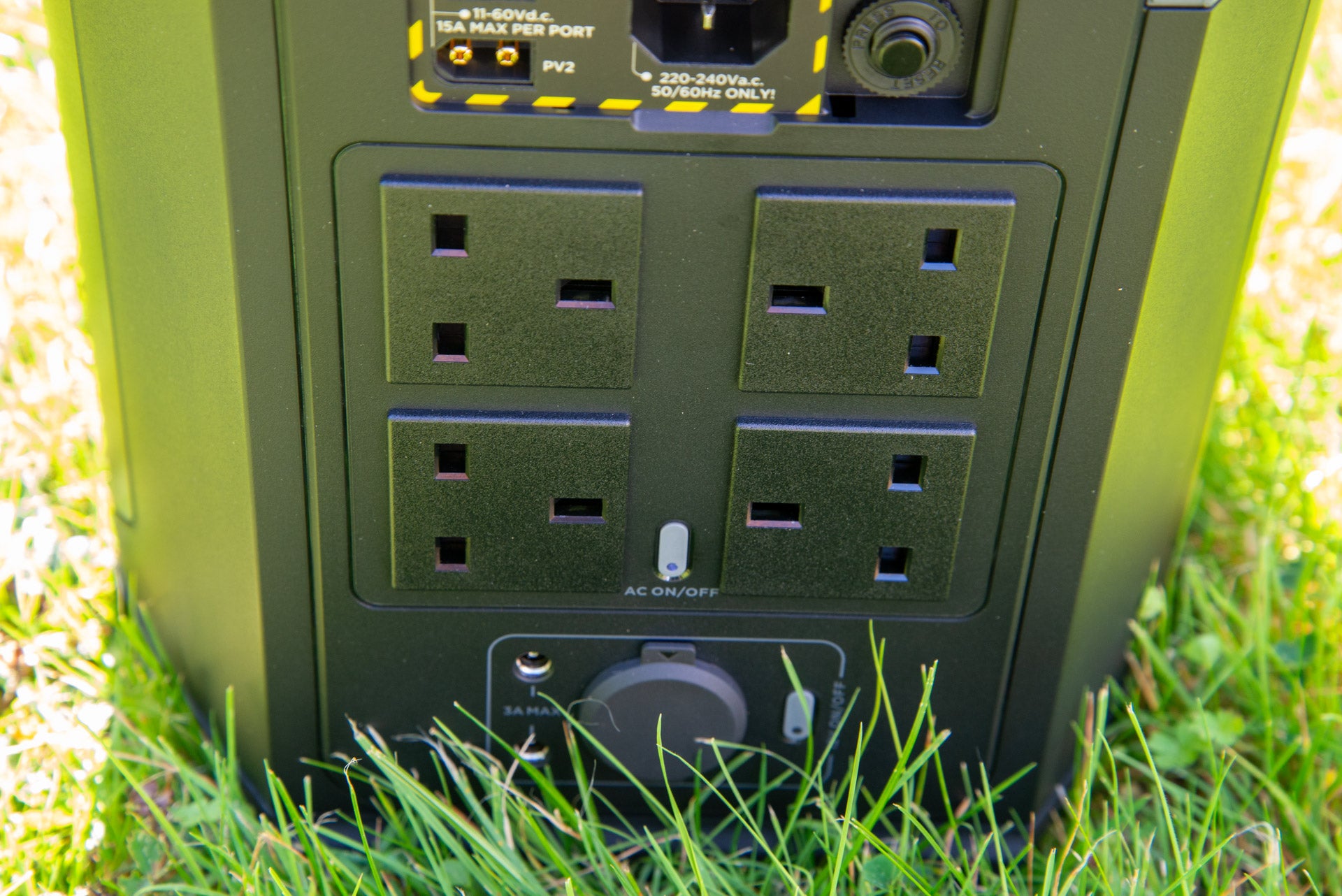
In the default mode, the power sockets support a combined output of 2400W, with a surge rating of 4800W. Turn on X-Boost, and the power output jumps to 3100W, which is more than a standard household plug provides. X-Boost won’t work with all devices, particularly those that have strict voltage requirements or voltage protection.
In effect, that means that you can power any single UK device, including a kettle; more realistically, you’ll find that you can power multiple high-power devices at once, giving this power station a huge amount of flexibility.
It can be used as an Emergency Power Supply (EPS), feeding mains power through to its power sockets; in the event of a power cut, the battery kicks in and takes over within 30ms. For devices reliant on faster switchover times, such as servers and some medical devices, that’s too long; for regular household devices, that’s not a problem.
While a big power output is useful, using high-power devices will drain the battery fast. If you do need more power, then the EcoFlow Delta 2 Max supports up to two additional EcoFlow Delta 2 Max Smart Batteries, each adding 2048Wh of power; that’s a total of 6144Wh of power.
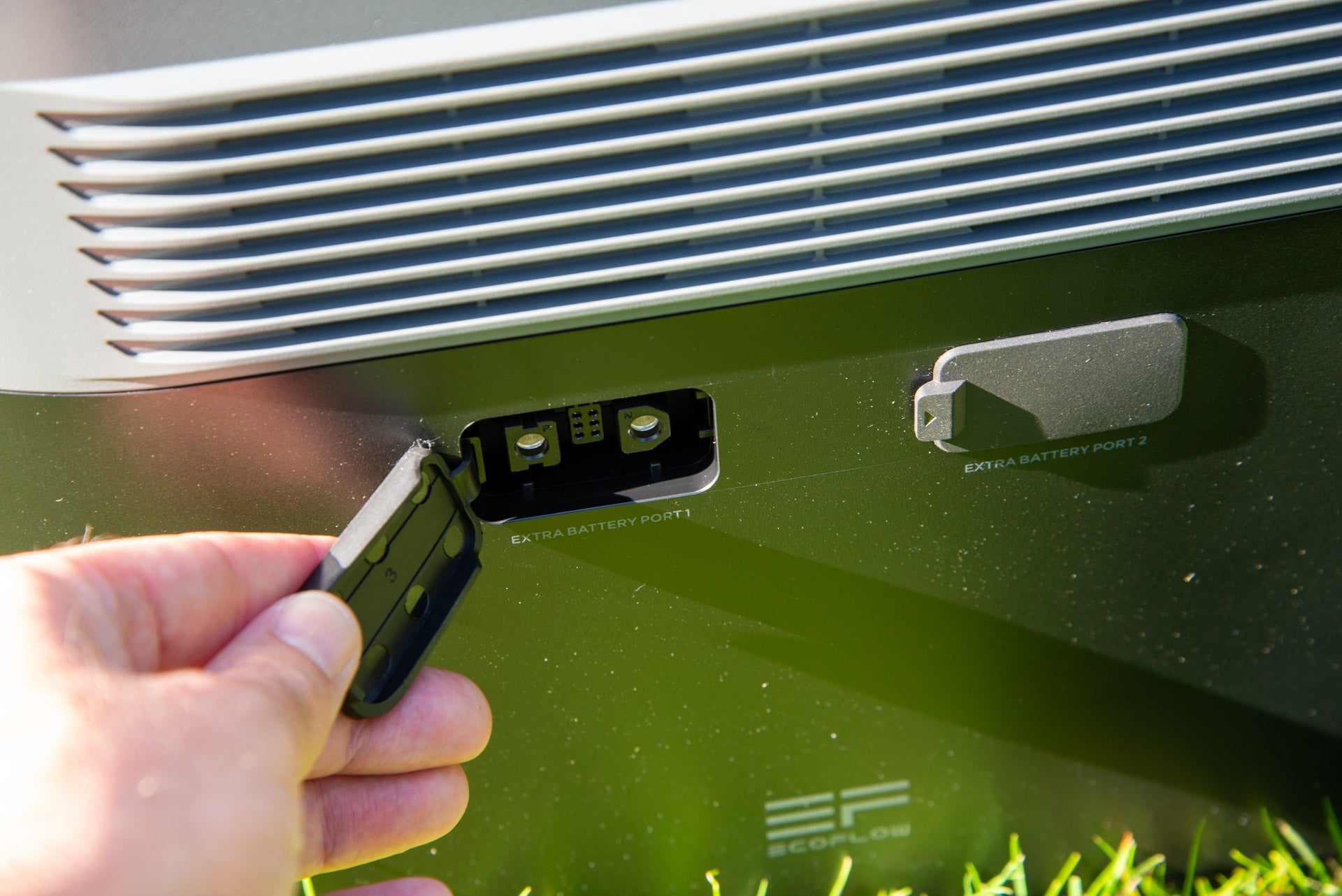
Via the screen on the front, you can see the current charge status (and any input power), plus the current drain and the battery life remaining in minutes and hours.
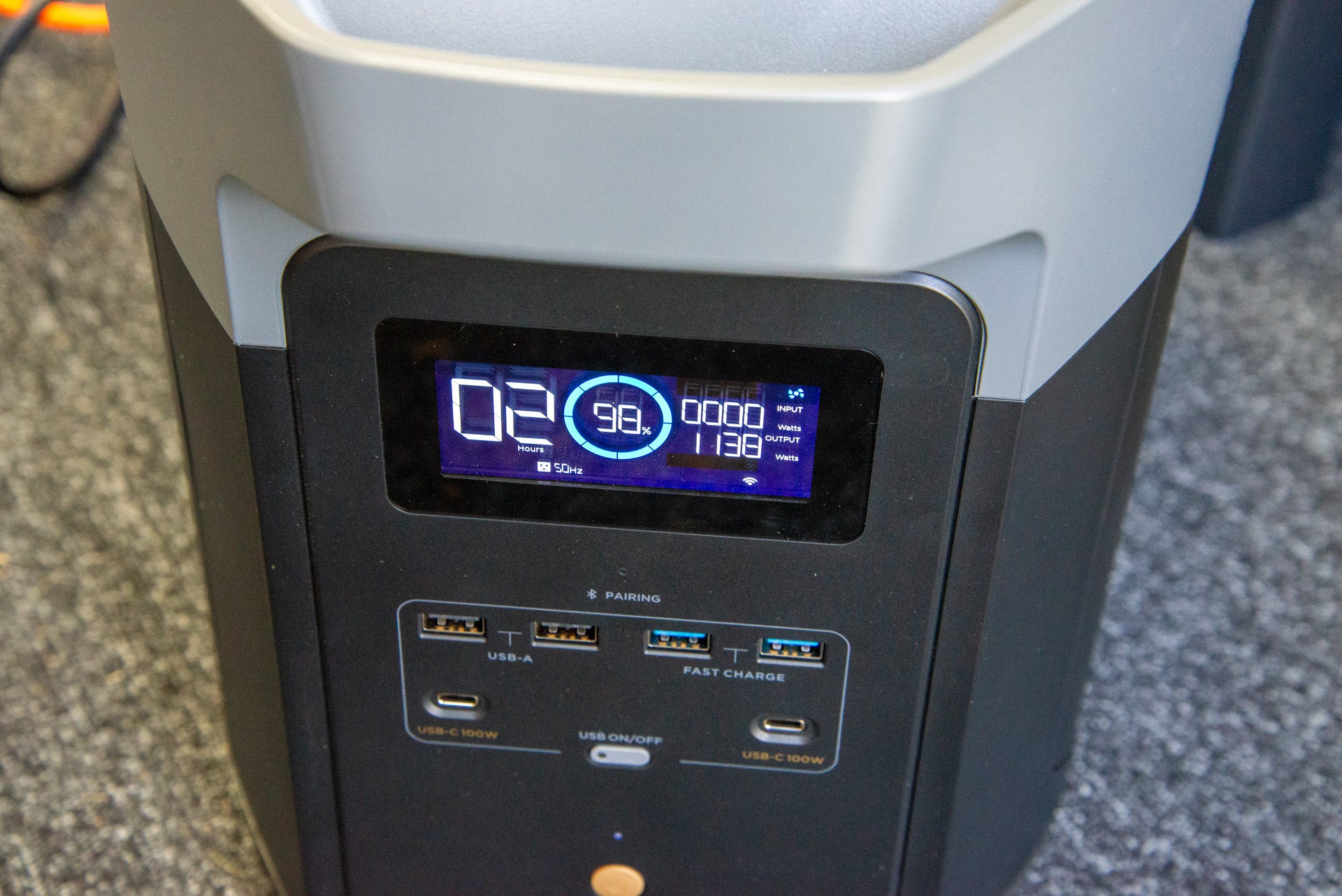
Controllable via Bluetooth or Wi-Fi, the EcoFlow Delta 2 Max is compatible with the EcoFlow smartphone app. This gives remote control over the outlets, and sees the same information that the physical LCD shows.
Via the app, you can also control X-Boost, the AC charging speed (it’s 2400W by default, but you may want to reduce this if you’re on a low-power circuit), and the charge/discharge limit (reducing these can improve battery life if you’re willing to sacrifice available capacity).
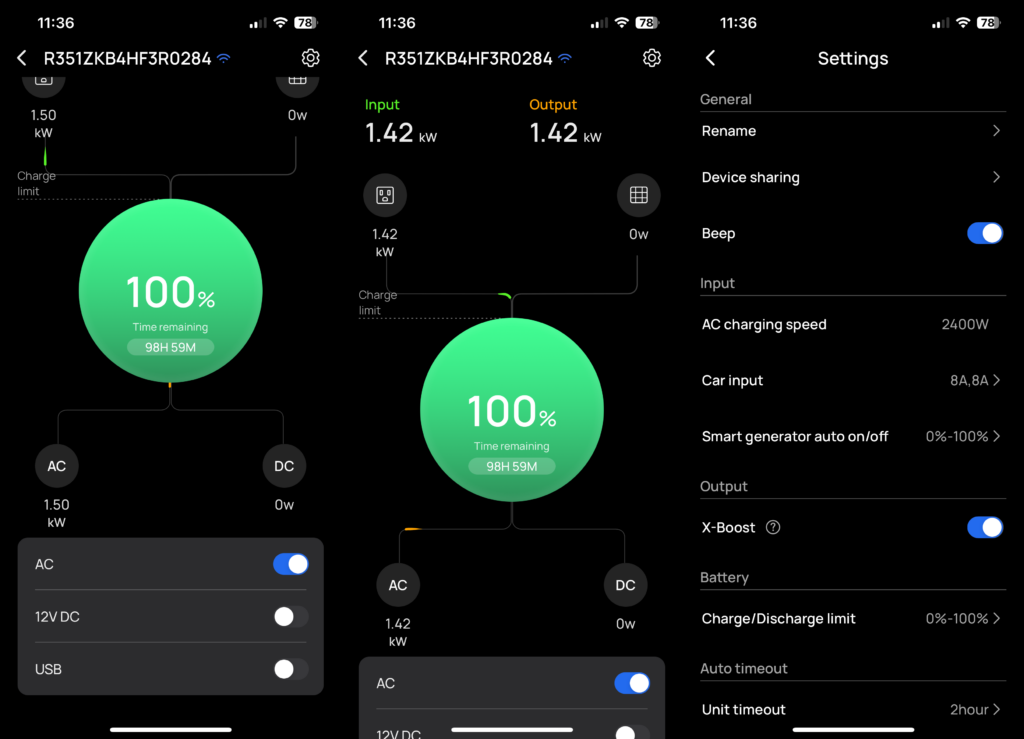
Charging and solar
- Charge to 80% in as little as 43 minutes
- Up to 1000W of solar power
For mains charging alone, the EcoFlow Delta 2 Max can hit 80% capacity in just 53 minutes, or it can get a full charge shortly after that. That’s great news if you need to go out and don’t have long to top up the battery.
There are inputs for up to 1000W of solar power. Connect the maximum, and EcoFlow says that the battery can be charged in 2.3 hours, although the strength of the sun and positioning of the solar panels will make a difference.
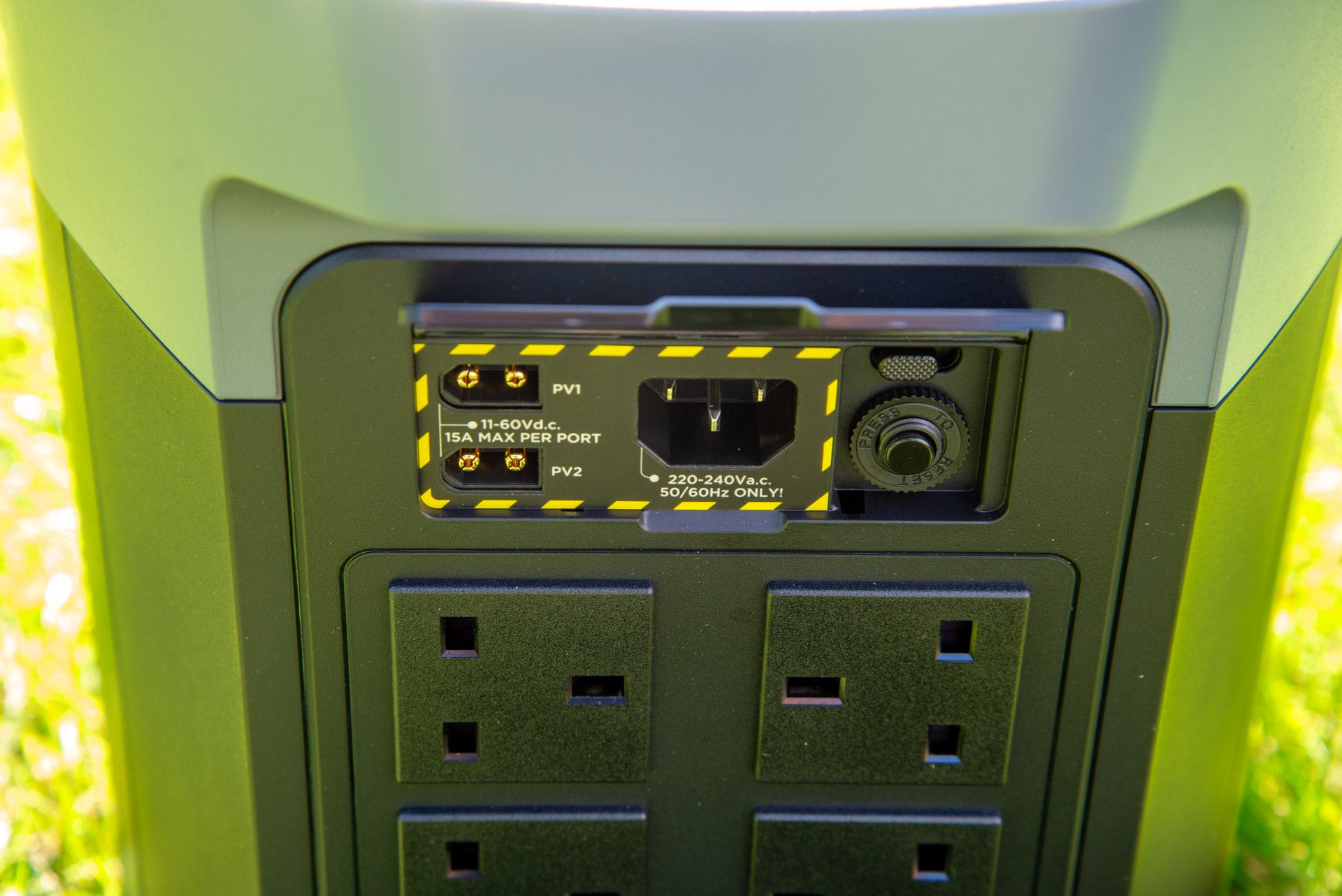
Solar and AC power can be combined, using a combination of 1800W AC and 600W solar maximum. This reduces the 80% charge time to just 43 minutes.
Built to be smart, the EcoFlow Delta 2 Max has energy management via the app for the solar input, where you can choose to prioritise solar input to save energy, or use more AC input if you want more energy available for the battery.
Charging the battery via AC, I saw that the EcoFlow Delta 2 Max used 2203Wh of power to fully top-up to 2048Wh. That means that the system draws 107.58% of the battery capacity, which is very competitive and ahead of the Ugreen PowerRoam GS1200 and just ahead of the Jackery Explorer 1000 Plus.
Performance
- Efficient discharge
- Long life batteries
Using LiFePO4 batteries, the EcoFlow Delta 2 Max has a quoted 80% capacity after 4000 charge and discharge cycles. Assuming that there’s linear degradation of battery capacity, this would mean that over its life, the EcoFlow Delta 2 Max would handle 5528.17kWh of power.
Based on the price of the power station, this works out to a cost of 34p per kWh of storage. That’s about average for a device of this type, and the cost tends to come down if you opt for a system with a smaller overall capacity.
Note that this price doesn’t include the cost of getting power into the system, as that could be from a standard electricity socket or via an off-peak tariff or even via solar panels.
To see how efficient the inverter is at converting DC power into AC power, I discharged the battery using a fan heater running at ~1000W. The total measured power output was 1.709kWh, which means the system was 83.45% efficient. That’s excellent, with wastage down to the internal systems and the conversion between DC (battery) and AC (mains) power.
Latest deals
Should you buy it?
You need a power station with a high power output
With four UK power plugs and a high power output of up to 3100W, this is a power station that can cope with pretty much anything.
You want something more portable
If you want something that you can more easily carry around, a lighter system with around 1000Wh of power may be better.
Final Thoughts
The main competition is from the Dabbsson DBS2300, which has a similar capacity to the EcoFlow Delta 2 Max. While the Dabbsson is slightly cheaper per kWh stored and has larger 3000Wh expansion batteries, it has a lower standard power output and only two UK power plugs.
Overall, the EcoFlow Delta 2 Max is more flexible with its high power output and faster charging, and it has a better app with smart energy control, too. If you’re a high power user and need that energy to be portable, this is a great system.
How we test
We test every battery station we review thoroughly over an extended period of time. We use standard tests to compare features properly. We’ll always tell you what we find. We never, ever, accept money to review a product.
Find out more about how we test in our ethics policy.
We test with a variety of devices to see how long the battery will last.
We test different charging methods to see how quickly the battery can be topped up.
FAQs
Its AC ports are rated at 2400W, although X-Boost increases this to 3100W, so most UK appliances are supported.
Yes, it can be expanded with up to two additional 2048Wh batteries.








